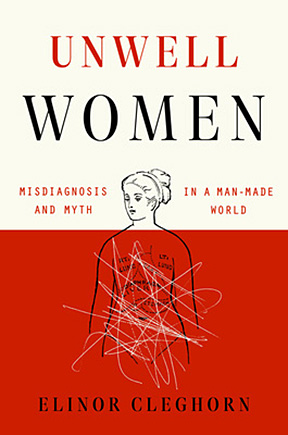Belief and Health
People talking provides the first narratives of anything. Western civilization values print history over oral history because reading and writing demonstrate higher levels of skill; literacy links to improved economic prospects. Historically authoritarian powers denied literacy education to subject people who didn’t “need to know;” and, most histories and ancient texts exclude narratives from women’s perspectives. I first heard about excluded narratives in a college literature course that covered critical thinking and semiotics. I didn’t like that the course challenged my beliefs; I scored a passed grade; now I understand.
Semiotics is the study of signs, symbols, and their interpretation. Metacognition is the awareness and understanding of one’s own thought process. During the past decade, as I experienced changing/recovering brain function and memory, I’ve thought about myself, my history, my thought processes. In grammar school, I was taught that thinking about oneself was selfish and, therefore, a sin. Autonomy requires thought. I now wonder, does everyone think about how and why they think what they think?
Apparently, medical professionals are thinking about thinking. This year, the American Medical Association and the Association of American Medical Colleges jointly published a paper, titled “Advancing Health Equity: A Guide to Language, Narrative and Concepts.” The 54-page document includes information from Race Forward, a non-profit racial justice organization, and references to CRT, Critical Race Theory. The AMA/AAMC document defines CRT as “born out of both legal studies and education scholarship, this is a framework that centers experiential knowledge, challenges dominant ideology, and mobilizes interdisciplinary action and research in order to uncover inequalities related to race and racism and other intersectional identities and/or experiences.”
 Whether the authors intended it or not, the AMA/AAMC definition of CRT includes every member of any socioeconomically disadvantaged group and anyone who might have been shortchanged by any power system. Shortchanged is my word. In the preceding sentence, I used the term “disadvantaged;” The AMA/AAMC document recommends substituting “historically and intentionally excluded; disinvested” for “disadvantaged.” It’s important to our shared public health history to know which and whose stories/cases didn’t make it into the books. It’s as important to understand our personal health histories as it is to clearly describe our aches and pains. It’s important for health professionals to understand group health histories to help identify related individual health issues. ACES, or adverse childhood experiences is a cross-cultural model linking childhood injuries and experiences to health problems in adulthood.
Whether the authors intended it or not, the AMA/AAMC definition of CRT includes every member of any socioeconomically disadvantaged group and anyone who might have been shortchanged by any power system. Shortchanged is my word. In the preceding sentence, I used the term “disadvantaged;” The AMA/AAMC document recommends substituting “historically and intentionally excluded; disinvested” for “disadvantaged.” It’s important to our shared public health history to know which and whose stories/cases didn’t make it into the books. It’s as important to understand our personal health histories as it is to clearly describe our aches and pains. It’s important for health professionals to understand group health histories to help identify related individual health issues. ACES, or adverse childhood experiences is a cross-cultural model linking childhood injuries and experiences to health problems in adulthood.
The AMA/AAMC document includes Race Forward’s depiction of a pyramidical “Narrative Ecosystem.” This symbol suggests that all narratives develop from the bottom up. Message and talk are most common and form the first level of the pyramid. From this foundation, we step up to story, which includes common stories and related messages. Story is then followed by a step up to a yet narrower level: narrative which the document defines as “collection of stories/messages that represent an idea or belief. Narratives highlight values, define the problem/causes, and determine the solutions/action.” Deep narrative at the pyramid’s pinnacle includes ‘“deeply held values that have been repeated and reproduced over time. They are “baked in.”’
 Pyramidical, hierarchical and authoritarian institutions have long guided and misguided healthcare, especially women’s healthcare. The 2021 book, “Unwell Women – Misdiagnosis and Myth in a Man-Made World,” provides a deep history of how males have diagnosed female conditions from ancient times until today. I try not to speak or write in terms of male/female because some past realities of survival cast men as more competent and assertive in the outer world while protecting women and children who stayed at home. That “baked in” narrative is giving way to more gender flexible vocations and roles. Still, it is girls and women who get pregnant in a world still driven by its own love/hate stories about purity, marriage, relationships, love, pregnancy and, more recently discussed, the dopamine reward system that accompanies sex. And, even now, women are judged both for wanting to keep and raise born infants they’re told they shouldn’t have conceived, and for not wanting to bear children they may not be able to raise.
Pyramidical, hierarchical and authoritarian institutions have long guided and misguided healthcare, especially women’s healthcare. The 2021 book, “Unwell Women – Misdiagnosis and Myth in a Man-Made World,” provides a deep history of how males have diagnosed female conditions from ancient times until today. I try not to speak or write in terms of male/female because some past realities of survival cast men as more competent and assertive in the outer world while protecting women and children who stayed at home. That “baked in” narrative is giving way to more gender flexible vocations and roles. Still, it is girls and women who get pregnant in a world still driven by its own love/hate stories about purity, marriage, relationships, love, pregnancy and, more recently discussed, the dopamine reward system that accompanies sex. And, even now, women are judged both for wanting to keep and raise born infants they’re told they shouldn’t have conceived, and for not wanting to bear children they may not be able to raise.
Another 2021 health history, Lawrence Wright’s 2021 book “The Plague Year – America in the time of COVID,” provides a narrative picture of Dr. Deborah Birx. Dr. Birx was the Trump Whitehouse’s Coronavirus Response Coordinator who sat shrinking down, looking pained while the president, standing, looking down at Dr. Birx, sought her confirmation that disinfectant injections into COVID patients could eliminate infection. The interaction hasn’t reflected well on Dr. Birx who, behind the scenes, traveled state to state by car to convince reluctant governors to encourage mask-wearing, social distancing and other COVID preventing measures. Dr. Birx’s life work includes fighting AIDS in Africa.
Symbols can sometimes reflect style over substance. I hope we all get healthier soon.
Happy Solstice.













